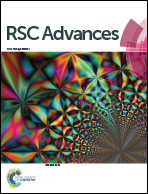MoS2/reduced graphene oxide hybrid structure and its tribological properties
Abstract
In this study, a MoS2/reduced graphene oxide hybrid material (MoS2/RGO) was synthesized through a facile and effective hydrothermal method. Fe–Ni matrix composites with different weight fractions of MoS2/RGO were prepared by a powder metallurgy (P/M) technique (1%, 3%, 5%, 7%), and their tribological properties at temperatures ranging from room temperature to 600 °C were investigated using a UMT-2 ball-on-plate friction and wear tester. Results showed that MoS2 nanospheres composed of many petal-like nanosheets were well attached to the creased RGO sheets. The Fe–Ni matrix composites with suitable MoS2/RGO content exhibited excellent friction-reducing and anti-wear properties over a wide temperature range, and the RGO in the MoS2/RGO hybrid material played an important role in the hardness and tribological performance of composites. In particular, the specimen with 3 wt% MoS2/RGO showed the lowest friction coefficient (0.21) and the most stable value of wear rate (1.07–1.90 × 10−5 mm3 N−1 m−1). And at 600 °C, the friction coefficient was less than 0.30 and the wear rate was 1.07 × 10−5 mm3 N−1 m−1 due to the lubricating effect of sulfide films and glaze layer formed on the friction surface at high temperature. The excellent tribological behavior of composites was attributed to the synergetic effect of high hardness and solid lubricants.


 Please wait while we load your content...
Please wait while we load your content...